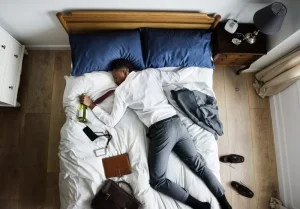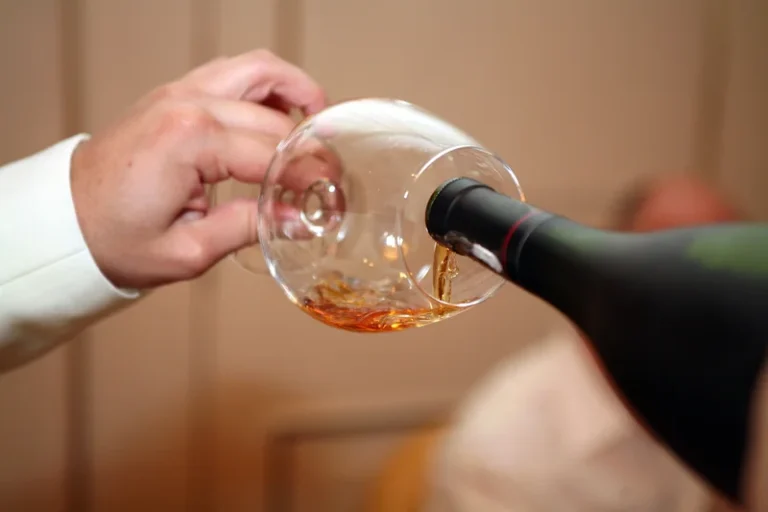
The dose of alcohol used in the testing session was 1.5 grams per kilogram of body weight— enough to produce a peak BAC of about 0.16 percent. (A corresponding BAC in humans would be twice the legal driving limit in most States.) As the figure illustrates, the cell’s activity was essentially shut off by alcohol. Neural activity returned to near-normal levels within about 7 hours of alcohol administration. To evaluate the effects of alcohol, or any other drug, on memory, one must first identify a model of memory formation and storage to use as a reference. This model often is referred to as the modal model of memory, as it captures key elements of several other major models.
- Also, because short-term memory remains intact, use ofecological momentary assessment with smart phones might also be useful forgathering information about the drinker’s experiences while he or she isin a blackout state.
- People with both diabetes and alcoholism and people with diabetes who often drink also increase their risk of worsening their symptoms.
- If you’re not sure whether your medication can cause hypos or if they’re affected by alcohol, it’s best to speak to your healthcare team.
Blackouts: State-Dependent Memory Formation?
Research suggests that fragmentary blackouts are far more common than those of the en bloc variety (White et al. 2004; Hartzler and Fromme 2003b; Goodwin et al. 1969b). Alcohol-related blackouts are gaps in a person’s memory for events that occurred while they were intoxicated. These gaps happen when a person drinks enough alcohol to temporarily block the transfer of memories from short-term to long-term storage—known as memory consolidation—in a brain area called the hippocampus. Drinking to the point of a blackout has gained pop culture notoriety in recent years. Alcohol-induced blackouts can lead to impaired memory of events that transpired while intoxicated, and a drastically increased risk of injuries and other harms. They can occur in anyone who drinks alcohol, no matter their age or level of experience with drinking.
Blackout Drunk: Signs, Causes, and Dangers of Blackout Drinking

Knight and colleagues (1999) observed that 35 percent of trainees in a large pediatric residency program had experienced at least one blackout. Similarly, Goodwin (1995) reported that 33 percent of the first-year medical students he interviewed acknowledged having had at least one blackout. “They drank too much too quickly, their blood levels rose extremely quickly, and they experienced amnesia” (p. 315).
Blackout effects on your body
- Students in the study reported that they later learned that they had participated in a wide range of events they did not remember, including such significant activities as vandalism, unprotected intercourse, driving an automobile, and spending money.
- Number of published journal articles or reviews that evaluate alcohol-inducedblackouts per year (1985 to 2015).
- Some people find that alcohol helps them deal with stress or when they’re feeling low.
However, when they were mildly intoxicated (0.08 percent BAC) those with a history of fragmentary blackouts performed worse than those without such a history. There are two possible interpretations for these data, both of which support the hypothesis that some people are more susceptible to blackouts than others. A second interpretation is that subjects in the blackout group performed poorly during testing as a result of drinking enough in the past to experience alcohol-induced memory impairments. In other words, perhaps their prior exposure to alcohol damaged the brain in a way that predisposed them to experiencing future memory impairments. This latter possibility is made more likely by recent evidence that students who engage in repeated episodes of heavy, or binge, drinking are more likely than other students to exhibit memory impairments when they are intoxicated (Weissenborn and Duka 2000). In a subsequent study, White and colleagues (2004) interviewed 50 undergraduate students, all of whom had experienced at least one blackout, to gather more information about the factors related to blackouts.

In recent years, studies have found that diet, stress, a lack of sleep, obesity, and gut inflammation can all increase Alzheimer’s disease risk in some individuals. The Recovery Village aims to improve the quality of life for people struggling with substance use or mental health disorder with fact-based content about the nature of behavioral health conditions, treatment options and their related outcomes. We publish material that is researched, cited, edited and reviewed by licensed medical professionals. The information we provide is not intended to be a substitute for professional medical advice, diagnosis or treatment. It should not be used in place of the advice of your physician or other qualified healthcare providers.

Because blackouts tend to occur at high BACs, they commonly stem from binge drinking, defined as a pattern of drinking that increases a person’s BAC to 0.08 percent or higher. This typically occurs after 4 drinks for women and 5 drinks for men—in about 2 hours. In fact, many people who have blackouts do so after engaging in a behavior known as high-intensity drinking, which is defined as drinking at levels that are at least twice as high as the binge-drinking thresholds for women and men. Alcohol use at baseline was reported by 3,389 (30%) patients, with 413 (4%) reporting heavy consumption.


Finally,given the growing literature on alcohol-induced memory impairments andblackouts, a standardized assessment for alcohol-induced blackouts is sorelyneeded. Most of the existing research on alcohol-induced blackouts either uses asingle item from the Rutgers Alcohol Problem Index or the investigator’sown description/definition of an alcohol-induced blackout. Optimally, actual BrACs orblood draws could be collected to back-extrapolate peak BACs to the time ofblackout. This information will enable researchers to statistically control forthe direct effects of alcohol consumption and examine factors that influencealcohol-induced blackouts over and beyond the amount of alcohol consumed.
Cardiovascular disease continues to be one of the leading causes of death among all Americans and is the leading cause of death in people with type 2 diabetes (Bierman 1992). The relationship of alcohol consumption to cardiovascular disease in diabetic people has not been well evaluated. However, substantial information on the association of alcohol and cardiovascular disease exists from population studies that included an unknown percentage of diabetics. Both complete abstainers and people drinking more than 34 grams of alcohol per day had higher death rates, with abstainers exhibiting the highest death rates from cardiovascular disease and heavy drinkers exhibiting the highest death rates from noncardiovascular disease. Those findings suggest that alcohol consumption, particularly moderate consumption, may have a protective effect against cardiovascular disease.
Are Some People More Likely Than Others to Experience Blackouts?
In 1953, large portions of H.M.’s medial temporal lobes, including most of his hippocampus, were removed in an effort to control intractable seizures (Scoville and Milner 1957). Although the frequency and severity of H.M.’s seizures were significantly reduced by the surgery, it soon became clear that H.M. He still was able to learn basic motor skills, keep information active in short-term memory for a few seconds or more if left undistracted, and remember episodes of his life from long ago, but he was unable to form can diabetics get drunk new long-term memories for facts and events. The pattern of H.M.’s impairments also forced a re-examination of models of long-term memory storage. Was able to retrieve long-term memories formed roughly a year or more before his surgery, he could not recall events that transpired within the year preceding his surgery. This strongly suggests that the transfer of information into long-term storage actually takes place over several years, with the hippocampus being necessary for its retrieval for the first year or so.
- On a side note, if you’re struggling to control your drinking despite the damage it’s causing, you may have an alcohol use disorder.
- Only 1 student out of 50 reported that the most recent blackout occurred after drinking beer alone.
- Questions about blackouts during routine medical visits could serve as an important simple screen for the risk of alcohol-related harms.
Students in the study reported that they later learned that they had participated in a wide range of events they did not remember, including such significant activities as vandalism, unprotected intercourse, driving an automobile, and spending money. Diabetic eye disease (i.e., retinopathy) is another troublesome tissue complication of diabetes and one of the leading causes of blindness in the United States today. Good blood sugar and blood pressure control as well as regular eye examinations are essential for the prevention of retinopathy. Heavy alcohol consumption may increase a person’s risk for developing this disease. Interestingly, the risk of retinopathy was independent of the men’s ability to control their blood sugar, suggesting that alcohol may directly damage the eyes or related structures. LDL cholesterol is strongly related to cardiovascular disease and stroke and has been called “bad” cholesterol.

